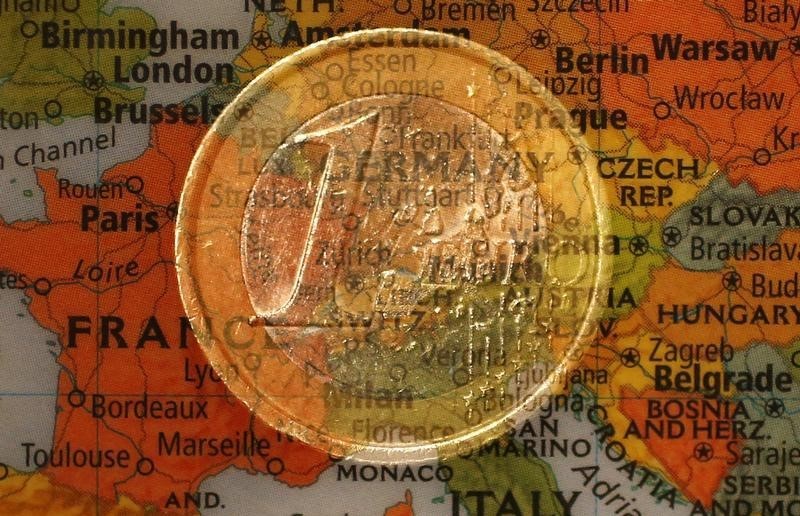Investing.com - The euro pared losses against the U.S. dollar on Monday, after data showed that German consumer prices rose in line with expectations this month although previous reports from the euro zone coupled with Greek debt concerns continued to weigh.
EUR/USD pulled away from 1.0892, the pair's lowest since May 28 to hit 1.0941 during European afternoon trade, still down 0.43%.
The pair was likely to find support at 1.0817, the low of May 27 and resistance at 1.1011, the high of May 25.
Preliminary data showed that the German consumer price index ticked up 0.1% in May, in line with expectations and after a flat reading the previous month. Year-on-year, consumer prices rose 0.7%, as anticipated.
The report came after data showed that the euro zone manufacturing purchasing managers' index came in at 52.2, unchanged from March’s final reading and a 10-month high, but down slightly from the preliminary estimate of 52.3.
Weakness in the region’s core economies persisted, with France’s manufacturing sector still in decline and Germany registering only modest growth.
Meanwhile, concerns over the prospect of a Greek debt default continued to weigh since Athens warned last month that it will be unable to make the repayment if a cash-for-reforms deal with its international lenders.
Greece is due to make a €305 million payment to the International Monetary Fund on June 5.
At the same time, the dollar remained broadly supported even after data showed that the U.S. economy contracted in the first quarter, as recent indications of a rebound in growth continued to fuel expectations for higher interest rates.
U.S. gross domestic product contracted at an annual rate of 0.7% in the first three months of the year, instead of the initial estimate of 0.2% growth the Commerce Department said. It was still better than economists’ forecast of a 1% contraction.
The euro was also higher against the pound, with EUR/GBP edging up 0.11% to 0.7192.
In the U.K., data on Monday showed that the Markit U.K. manufacturing PMI ticked up to 52.0 in May from a downwardly revised 51.8 in April, but came in below forecasts of 52.5.
Sterling also remained under pressure amid renewed concerns over a possible British exit from the European Union. Prime Minister David Cameron’s government introduced a law in parliament on Thursday to ensure a U.K. referendum on EU membership will be held by the end of 2017.
